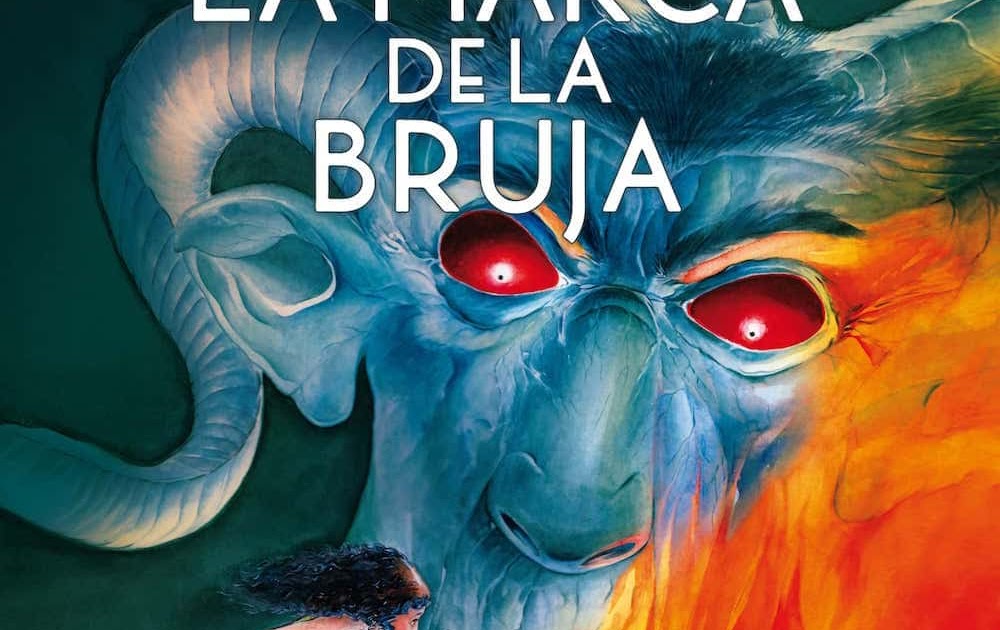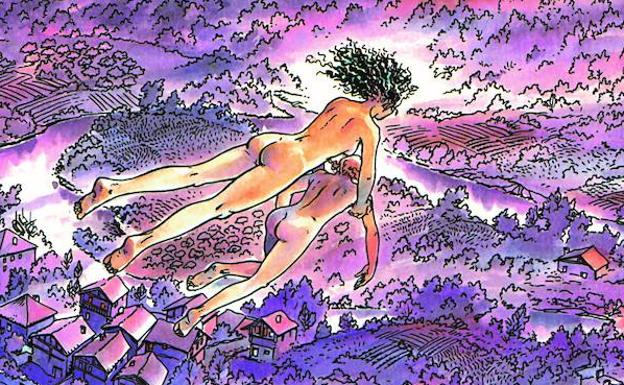
Original titles: Pilgrims of Hell; The Witch’s Mark; The brand of the bride.
Year of publication: 1983 by part, in the magazine Habeko Mik; 1985, as a full album.
Valuation: advisable
Since what the corny people call the spooky season (we will agree that it sounds quite cheesy… although of course, say cheesy It is also one), I propose to do a review of different emblematic characters of the horror genre, the one that some of us love (pun intended), although it can give us a pretty bad time… and in fact, better if it does have a bad time One of those terrifying archetypes, already from popular tales rooted, supposedly, in the mists of time: witches.
It is also true that the accusation of witchcraft used to be made in past times in a way that was not just false, but rather gratuitous and that is what happens to the protagonist of this story, Elvira de Goitie, a neighbor of Ustaritz, in Lapurdi (Country French Basque), who in 1611 was arrested for alleged witchcraft (the true cause of the accusation is much more pedestrian). She manages to escape from prison with her aunt and niece from Biarritz, Catheline and Ane, and together with Elvira’s son, with the help of the healer Inés and the pastor Martín de Harza, they cross the border, pursued by the men of the infamous Pierre de Lancre -this was a real character-, to carry out a journey through the lands of Navarre, Rioja and Aragonese during which they will experience various adventures, disappointments and some joy. Along the way, other members such as the young Felipillo or the French alchemist Eugéne will join this improvised family.
Thus, we will witness various tribulations, sword fights, murders… in fact, a good part of the vicissitudes of Elvira and her friends could be said to be taken from an episode of CSI or a case of Mrs. Fletcher, since they must solve the mysteries that they come across – in some cases, being themselves the objective of the criminals – in a variety of highly entertaining adventures, over four long episodes and three shorter intermediate ones; Apparently, a fifth was also published at the time, but due to circumstances it was not completed satisfactorily and was not included in this compilation…
The most interesting thing, apart from the plot itself of these stories, is the setting of the time, the 17th century, with a review of the ins and outs of society, customs, festivals, etc. apparently very well documented, as well as a portrait of certain marginal groups such as the pícaros and hustlers, the agotes of Navarra and the -hidden- Moriscos of Aragon. The authors also show great sensitivity towards the problems of women of the time, totally subordinated to male domination and often victims, not only of individual but also of institutional violence (sensitivity that may perhaps surprise some members of the societies). new generations, coming from some “gentlemen” from 40 years ago… which shows that prejudices are usually wrong).
For this setting to be credible, the graphic aspect of this comic is essential; Daniel Redondo’s illustrations, with realistic and very detailed lines, in line with the historical and adventure genre BD of those years (François Bourgeon, Juillard, Hermann Huppen), not only show a very high level in terms of characters, landscapes and animals (horses are usually a nightmare for cartoonists, it is said), but also, in architectural recreation, whether it is small towns or cities like Logroño, Zaragoza or even Paris, showing meticulous reconstructions and it can be assumed that well documented that they are a real delight. For this reason alone it would be worth taking a look at this book, but I already say that it is not the only reason I recommend reading it, if you have the opportunity. It is true that the witch in question will not satisfy horror lovers as much, as it ends up being something very different, but that was also what happened with “real” witches, after all…

Use:
I have put these three languages as originals because the editorial history of the comics collected in this book is quite curious. Originally conceived in Spanish, apparently, they were first published in installments in the Basque language, in the adult comics magazine habeko MIk, of the Basque Government’s body for the teaching and dissemination of Basque; later edited as a book in France by Dargaud (in French, of course), not being compiled and published in Spanish (and in Basque, again), until 2017.
Source: https://unlibroaldia.blogspot.com/2024/10/gregorio-muro-harriet-daniel-redondo-la.html


